Affiliate links on Android Authority may earn us a commission. Learn more.
Qualcomm's new wearable chipsets promise performance, battery improvements
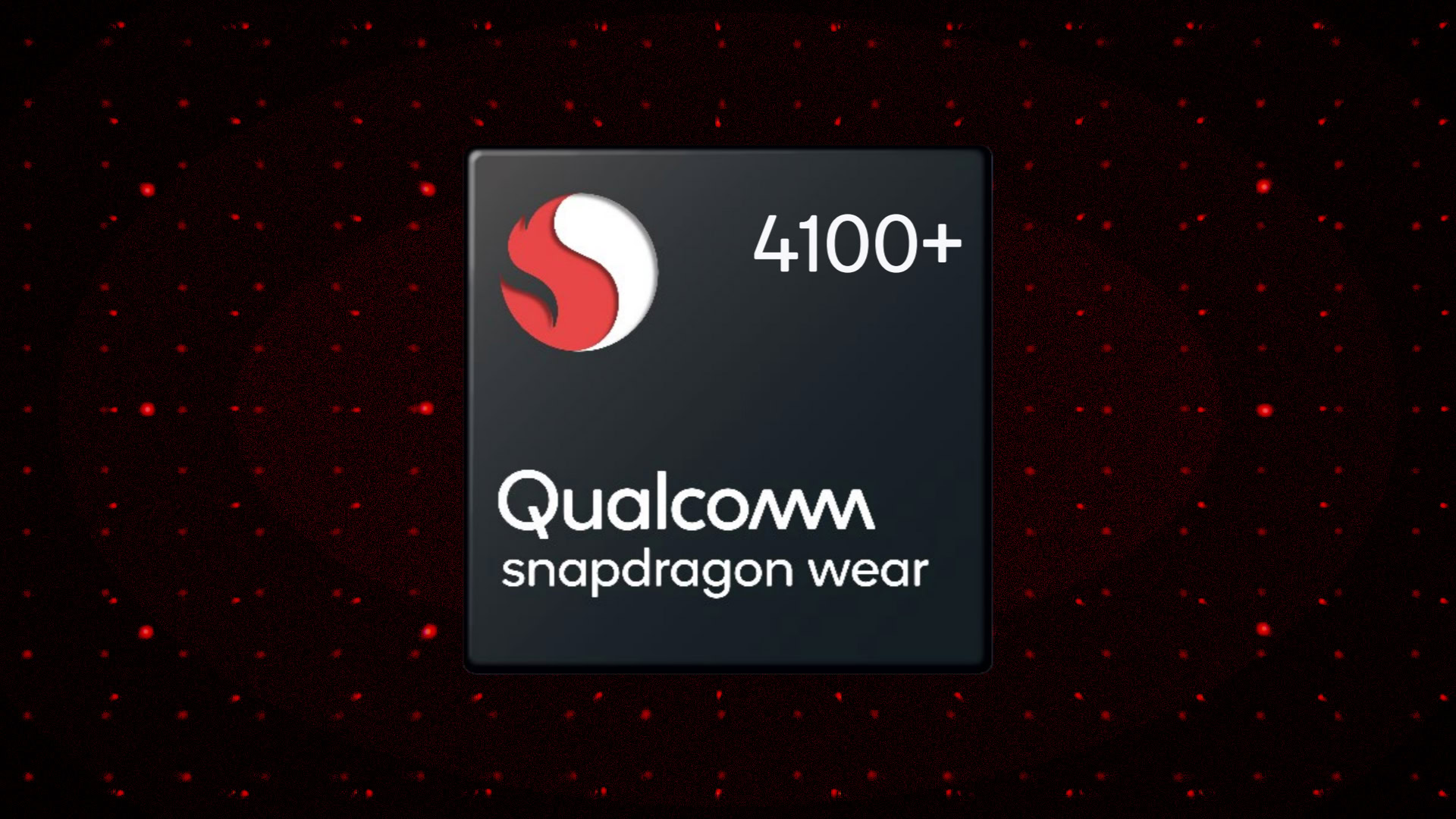
You may not have noticed, but smartwatches are finally becoming commonplace. The question being asked has shifted from “Should I get a smartwatch?” to “Which smartwatch should I get?”. Devices like the Apple Watch have made a wearable computer a luxury item and luxury watch companies are now making wearable computers. In fact, it’s become difficult to find a watch company that doesn’t now make a smartwatch.
The problem that persists though, is that, with the exception of a couple of companies, smartwatches are still a bit slow, and have less than stellar battery life. Google’s Wear OS just hasn’t been given the R&D resources it deserves, and Apple is one of the only companies that makes yearly improvements to its watch processor, so there hasn’t been a ton of incentive to make smartwatches that much better. Qualcomm improved performance with the Snapdragon Wear 3100 in 2018, but the battery life on most watches has remained subpar.
Also read: The best Wear OS smartwatches you can buy
But this year, Qualcomm is looking to tackle many of the problems smartwatches face with the new Wear 4100 and Wear 4100 chips. Here’s what’s new.
A big little die shrink
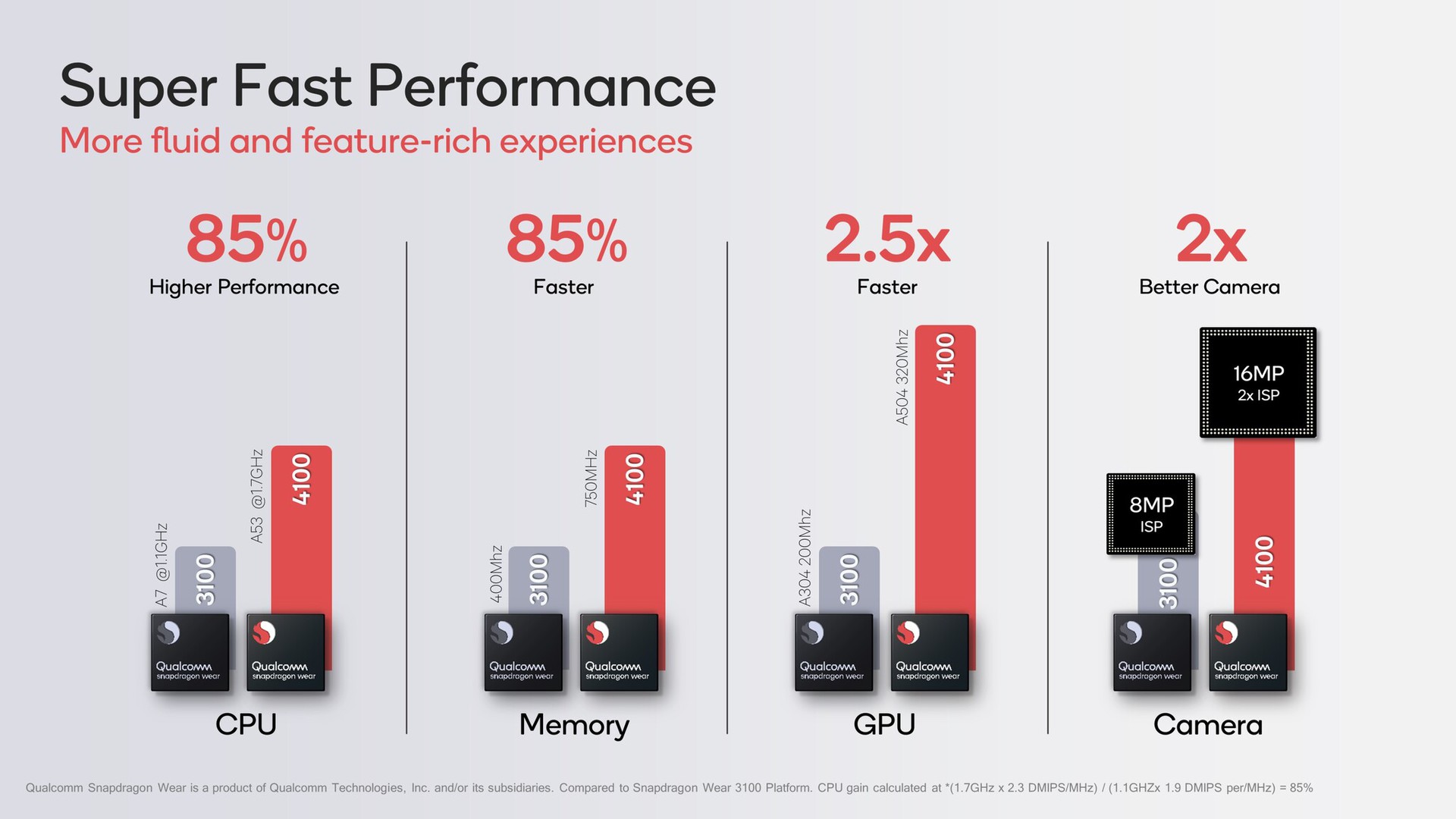
The umbrella encompassing most of the improvements in the Wear 4100 series is a massive process shrink. While the Wear 3100 series was based on a 28nm process, the 4100 series moves straight to a 12nm process. This results in multiple improvements, including a big speed bump and improved battery life.
The CPU on the Wear 4100 has moved from the Cortex A7 to the Cortex A53. While still quad-core, the clock speed has been massively improved, up to 1.7GHz from 1.1GHz. Qualcomm says this results in 85% better performance, which should make watches feel much snappier. RAM on the chip also gets an 85% speed boost, now running at 750MHz, up from 400MHz on the Wear 3100. Finally, the GPU is upgraded to the Adreno A504 from the Adreno 304, which offers a 2.5x performance boost.
Qualcomm has also added a second Image Signal Processor (ISP) to the Wear 4100, allowing smartwatches to feature two cameras, up from one on the Wear 3100.
A better co-processor
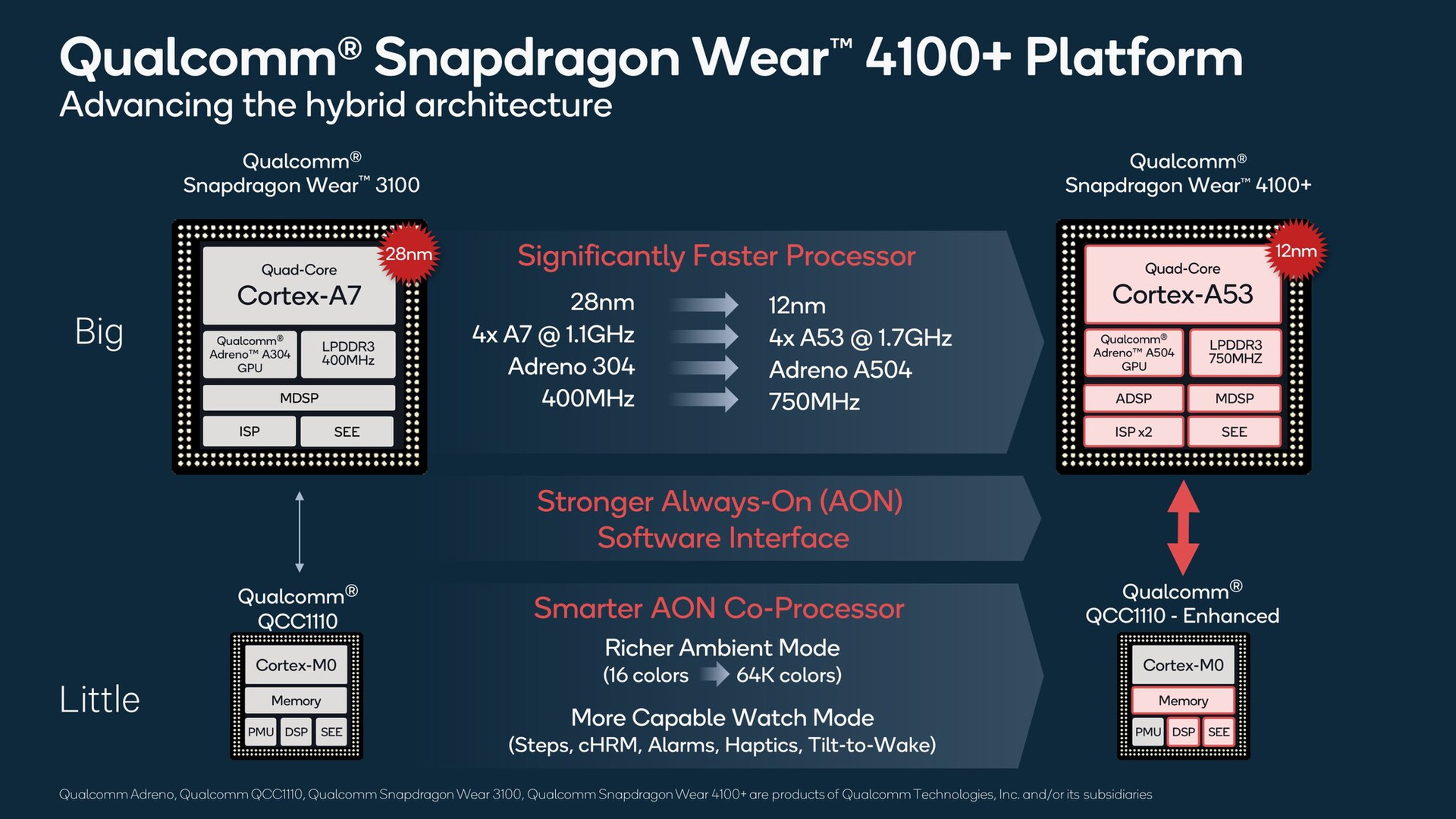
The co-processor is one of its most important features. Qualcomm says smartwatches spend 95% of their lifetimes in ambient mode, with only 5% dedicated to active processing. Because of this, the co-processor needs to be effective at ambiently displaying information in a low-power state.
Qualcomm shifted a lot of lower-powered activities like step counting, alarms, and haptics to its QCC1110 co-processor, which will sip power compared to the primary processor. Because many of the interactions we have with smartwatches are based around these features, the chip can save a lot of power.
Many low-power functions are moving to the co-processor.
This is important for people who use their smartwatches for sleep tracking. If you need to charge your watch every night, you won’t be able to use it for these features. With a lot of features being moved to the co-processor to operate in a low-energy state, this should enable enough battery life to use features like sleep tracking.
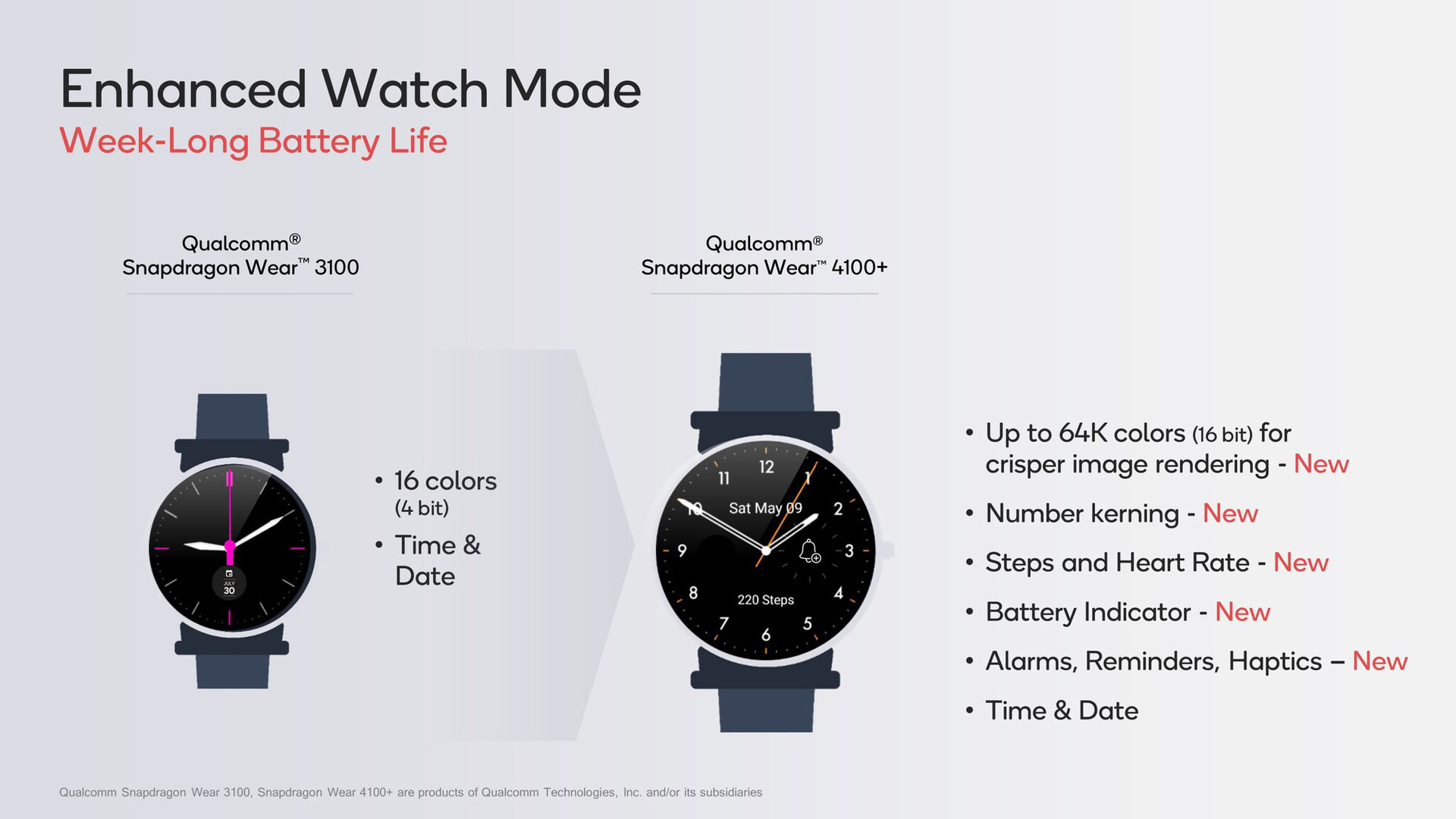
The co-processor has been enhanced in other ways, like an improved 16-bit color range, which can now display up to 64,000 unique tones up from just 16 on the Wear 3100 series. This enables the ambient mode to show more expressive features. An ambient battery indicator will also help you know when you need to charge your watch.
Wear 4100 vs 4100 Plus: What’s the difference?
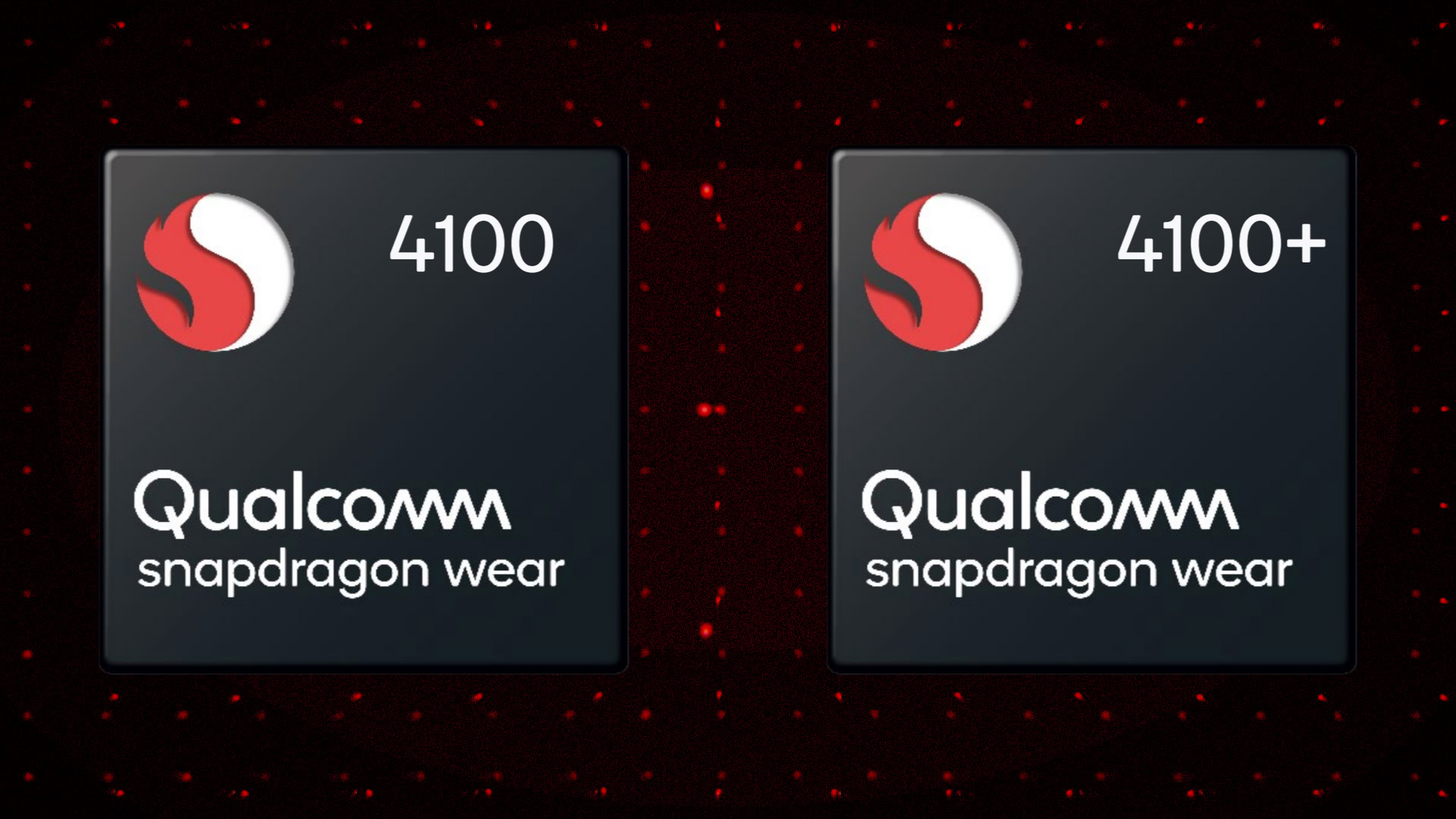
The biggest difference between the 4100 and 4100 Plus platforms is the presence of the co-processor. Customers who opt for the 4100 will still see the performance benefits from the die shrink and components improvements, but the lack of a co-processor will make ambient mode less than ideal.
The 4100 will probably be priced a decent amount less than the 4100 Plus, but considering the improvements the co-processor brings, it’s likely most ODMs will reach for the 4100 Plus more often than not. Qualcomm says customers may choose the 4100 over the 4100 Plus if they are making simpler watches for kids or seniors, or if they want to use their own co-processor.
When will we start seeing devices?
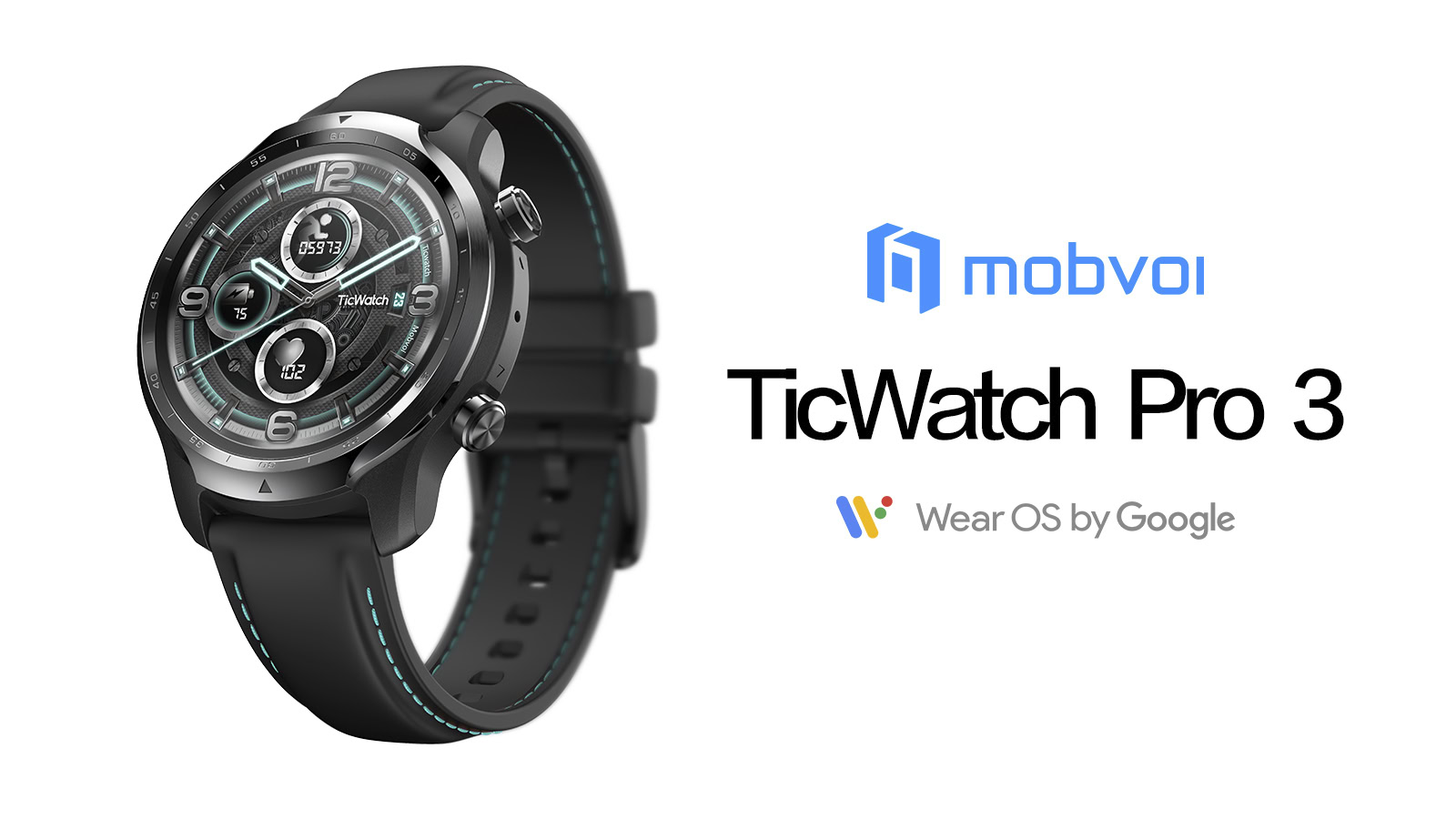
So far, two ODMs have committed to using Qualcomm’s new platform. Mobvoi will it for a new TicWatch, the TicWatch Pro 3, and Xiaotiancai, a BBK brand, will use the platform for a new kids smartwatch which takes advantage of the new second ISP to offer two cameras. The new TicWatch will be launching by the end of the year, and the Xiaotiancai Z6 will release within 30 days.
Considering the massive leap in performance and the improved battery life, we’re hoping to see a number of new devices with the new platform soon.